Jeep Compass vs Renault Captur – Performance, range & efficiency compared
Compare performance, boot capacity, efficiency and price at a glance.
Find out which car is the better choice for you – Jeep Compass or Renault Captur?
Costs and Efficiency:
When it comes to price and running costs, the biggest differences usually appear. This is often where you see which car fits your budget better in the long run.
Renault Captur has a significantly advantage in terms of price – it starts at 21100 £, while the Jeep Compass costs 34200 £. That’s a price difference of around 13072 £.
Fuel consumption also shows a difference: Renault Captur manages with 4.50 L and is therefore noticeable more efficient than the Jeep Compass with 5.80 L. The difference is about 1.30 L per 100 km.
Engine and Performance:
Power, torque and acceleration are the classic benchmarks for car enthusiasts – and here, some clear differences start to show.
When it comes to engine power, the Jeep Compass has a noticeable edge – offering 213 HP compared to 143 HP. That’s roughly 70 HP more horsepower.
In acceleration from 0 to 100 km/h, the Jeep Compass is slight quicker – completing the sprint in 8.50 s, while the Renault Captur takes 8.90 s. That’s about 0.40 s faster.
In terms of top speed, the Jeep Compass performs slight better – reaching 188 km/h, while the Renault Captur tops out at 180 km/h. The difference is around 8 km/h.
There’s also a difference in torque: Jeep Compass pulls distinct stronger with 345 Nm compared to 265 Nm. That’s about 80 Nm difference.
Space and Everyday Use:
Whether family car or daily driver – which one offers more room, flexibility and comfort?
Both vehicles offer seating for 5 people.
In curb weight, Renault Captur is evident lighter – 1323 kg compared to 1667 kg. The difference is around 344 kg.
In terms of boot space, the Jeep Compass offers noticeable more room – 550 L compared to 422 L. That’s a difference of about 128 L.
In maximum load capacity, the Jeep Compass performs to a small extent better – up to 1561 L, which is about 198 L more than the Renault Captur.
Who wins the race?
The Renault Captur proves to be has a very small edge and therefore becomes our DriveDuel Champion!
Renault Captur is the better all-rounder in this comparison.
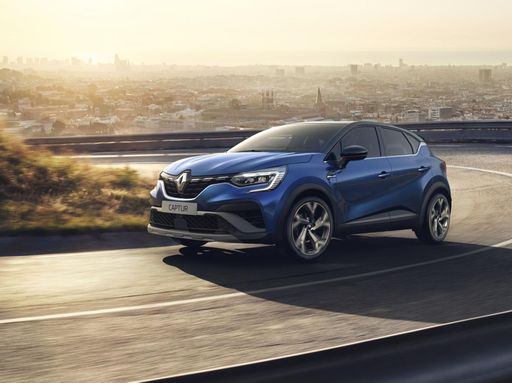 @ Renault Group Media
@ Renault Group Media
Renault Captur
Jeep Compass
The Jeep Compass packs classic Jeep styling with a surprisingly composed demeanor, equally at home turning heads in the city or tackling a weekend dirt track. Inside it's a pragmatic, user-friendly compact SUV that prioritizes comfort and versatility — a smart pick if you want a dose of adventure without giving up everyday sense.
details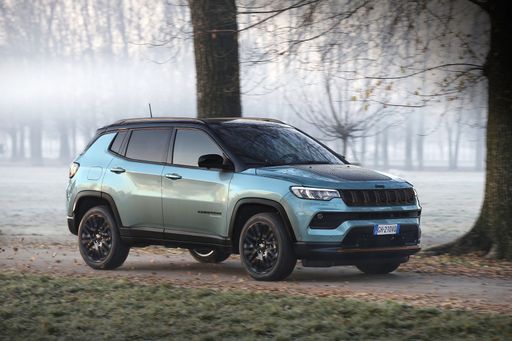 @ Jeep / Stellantis Media
@ Jeep / Stellantis Media
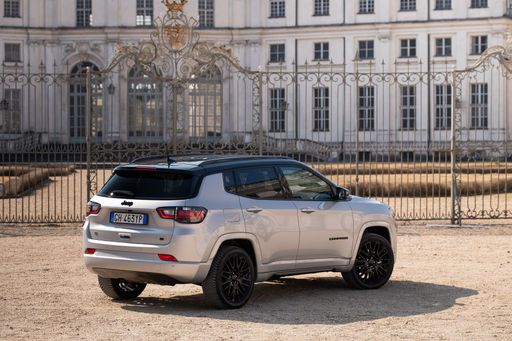 @ Jeep / Stellantis Media
@ Jeep / Stellantis Media
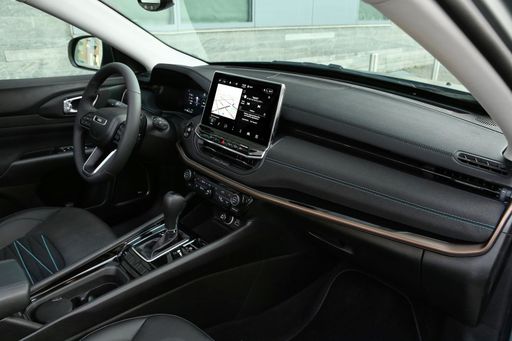 @ Jeep / Stellantis Media
@ Jeep / Stellantis Media
 @ Jeep / Stellantis Media
@ Jeep / Stellantis Media
 @ Jeep / Stellantis Media
@ Jeep / Stellantis Media
Renault Captur
The Renault Captur is a cheeky little crossover that pairs city-friendly agility with a roomy, well-thought-out cabin and enough style to turn heads at the lights. It’s a sensible choice for buyers who want practical versatility and a dash of personality on their daily drives, without taking itself too seriously.
details @ Renault Group Media
@ Renault Group Media
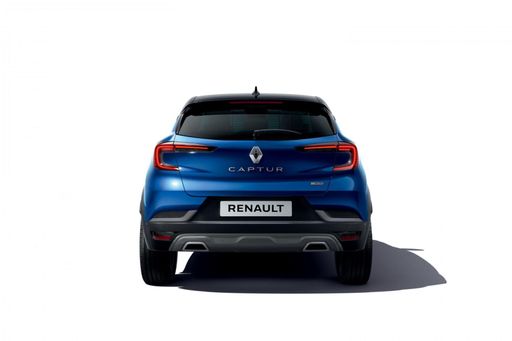 @ Renault Group Media
@ Renault Group Media
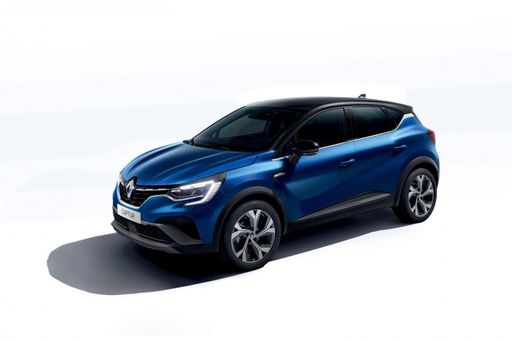 @ Renault Group Media
@ Renault Group Media
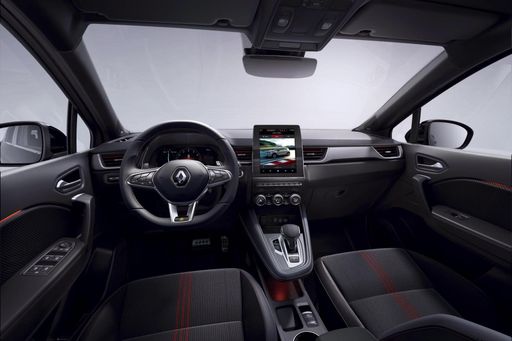 @ Renault Group Media
@ Renault Group Media
 @ Jeep / Stellantis Media
@ Jeep / Stellantis Media
|
 @ Renault Group Media
@ Renault Group Media
|
|
|
|
Costs and Consumption |
|
|---|---|
|
Price
34200 - 43200 £
|
Price
21100 - 28300 £
|
|
Consumption L/100km
5.8 - 5.9 L
|
Consumption L/100km
4.5 - 6 L
|
|
Consumption kWh/100km
17.50 kWh
|
Consumption kWh/100km
-
|
|
Electric Range
500 km
|
Electric Range
-
|
|
Battery Capacity
74 kWh
|
Battery Capacity
-
|
|
co2
0 - 133 g/km
|
co2
102 - 137 g/km
|
|
Fuel tank capacity
55 L
|
Fuel tank capacity
48 L
|
Dimensions and Body |
|
|---|---|
|
Body Type
SUV
|
Body Type
SUV
|
|
Seats
5
|
Seats
5
|
|
Doors
5
|
Doors
5
|
|
Curb weight
1667 - 2198 kg
|
Curb weight
1323 - 1514 kg
|
|
Trunk capacity
550 L
|
Trunk capacity
326 - 422 L
|
|
Length
4552 mm
|
Length
4239 mm
|
|
Width
1928 mm
|
Width
1797 mm
|
|
Height
1675 mm
|
Height
1575 mm
|
|
Max trunk capacity
1561 L
|
Max trunk capacity
1276 - 1363 L
|
|
Payload
-
|
Payload
376 - 453 kg
|
Engine and Performance |
|
|---|---|
|
Engine Type
Petrol MHEV, Electric
|
Engine Type
Full Hybrid, Petrol, Petrol MHEV
|
|
Transmission
Automatic
|
Transmission
Automatic, Manuel
|
|
Transmission Detail
Dual-Clutch Automatic, Reduction Gearbox
|
Transmission Detail
Automatic Gearbox, Manual Gearbox, Dual-Clutch Automatic
|
|
Drive Type
Front-Wheel Drive
|
Drive Type
Front-Wheel Drive
|
|
Power HP
145 - 213 HP
|
Power HP
115 - 143 HP
|
|
Acceleration 0-100km/h
8.5 - 10.3 s
|
Acceleration 0-100km/h
8.9 - 12.3 s
|
|
Max Speed
180 - 188 km/h
|
Max Speed
180 km/h
|
|
Torque
230 - 345 Nm
|
Torque
160 - 265 Nm
|
|
Number of Cylinders
3 - 4
|
Number of Cylinders
3 - 4
|
|
Power kW
107 - 157 kW
|
Power kW
84 - 116 kW
|
|
Engine capacity
1199 cm3
|
Engine capacity
1199 - 1789 cm3
|
General |
|
|---|---|
|
Model Year
2025
|
Model Year
2025
|
|
CO2 Efficiency Class
D, A
|
CO2 Efficiency Class
C, D, E
|
|
Brand
Jeep
|
Brand
Renault
|
What drivetrain options does the Jeep Compass have?
The Jeep Compass is available as Front-Wheel Drive.
The prices and data displayed are estimates based on German list prices and may vary by country. This information is not legally binding.
